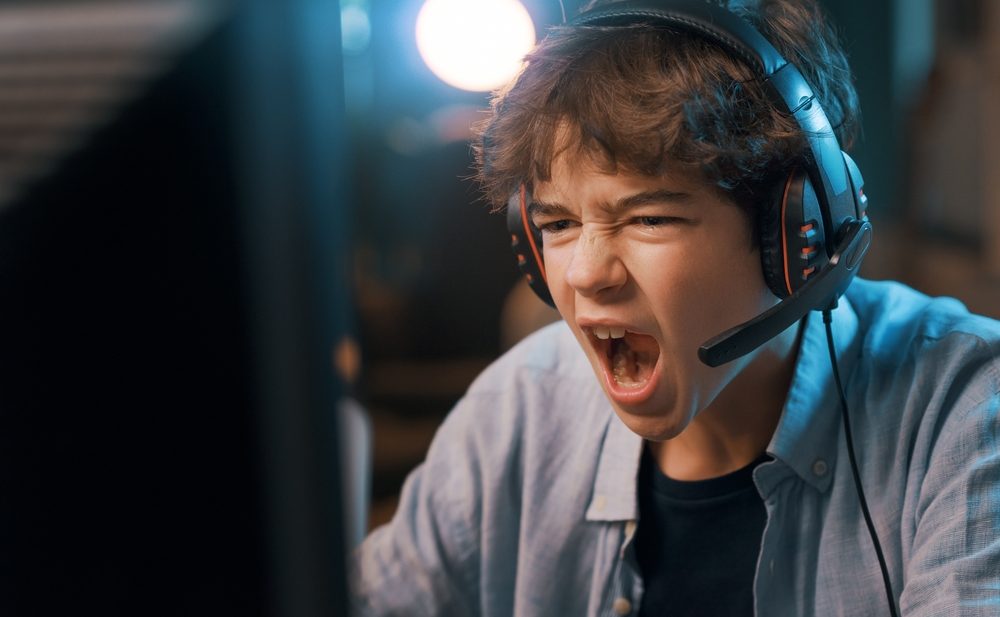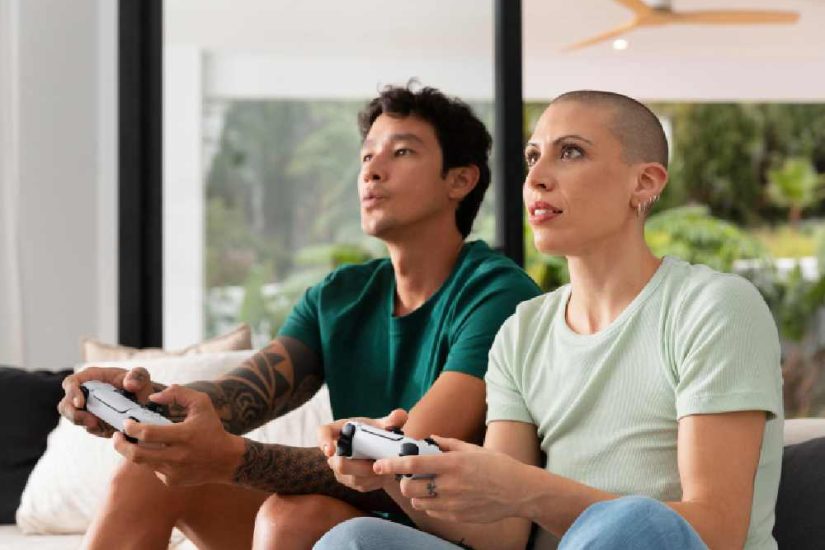- February 7, 2024
- by Harshita Bajaj
- Gaming Addiction, Mental Health
Nowadays, the amount of screen time spent on social media, gaming, movies and series among kids is increasing at an alarming rate. Of particular interest is how kids are engrossed with virtual gaming. It’s essential to state that gaming can be a fun and harmless hobby for many, however, only when it is used as hobby, for relaxing and entertainment in moderation, or as a medium for skill development.
When a child starts to spend an increasing amount of time on Virtual or Internet Gaming and it starts to interfere with daily life, it can be concerning. Did you know there are approximately 212 million gamers in the United States (2022), of which 24% are children and adolescents?
What is Internet Gaming Addiction?
Internet Gaming Addiction involves a preoccupation with online gaming leading to a neglect of real-life responsibilities. The definition of online games addiction is a persistent occupation with gaming that the individual uses to escape reality, or elevate his/her mood, with changes in mood (frustration, irritability, anxiety or low mood) if unable to play, and lastly, negative consequences such as impact on work or studies, relationships and sleep.
The prevalence of Internet Gaming Addiction and Internet Gaming Disorder
Let us take a closer look at how widespread the issue is according to Statista trends & statistics, and Pew Research Center:
- US Teens spent an average of 73.8 minutes per day on video games in 2019. During COVID (2020), this increased to an average of 112.8 minutes per day.
- US Teens and children (below 18 years) are the second highest users of online games, accounting for 24% of this population.
- 2% of children and adolescents are likely to be affected by Internet Gaming Disorder (IGD).
- IGD is observed up to five times more often among males than females.
- 95% of teens in US have access to a smartphone, 80% have access to a gaming console and 90% have access to a desktop or laptop in the US as of 2022.
Internet Gaming Disorder according to DSM-5
Internet Gaming Disorder is recognized as a potential diagnosis in section 3 of the Diagnostic and Statistical Manual of Disorders – Fifth Edition (DSM-5) encouraging further research on it.
The diagnostic criteria for IGD require “ongoing and recurrent internet gaming causing clinically significant impairment or distress, displaying at least 5 of the 9 symptoms listed in the past 12 months.” The full criteria can be accessed here.
Paulus et al. (2018) state that an essential component of IGD is persistent and recurrent participation in either digital or video gaming, for on average 8-10 hours in a day or at least 30 hours in a week.
Impact of gaming addiction
Kuss (2013) elucidates the many psycho-social consequences among children and adolescents when they develop a digital game addiction or video game addiction:
- Sacrificing real-life relationships and socialization to escape reality
- Neglecting sleep, work, education to spend time on gaming
- A lack of and disinterest towards real-life relationships and focusing on virtual relationships or simply isolating
- Lack of attention and problems with verbal memory
- Increased aggression and hostility
- High stress and loneliness
- Development of dysfunctional coping mechanisms
- Poor academic achievement
- Low well-being
- Issues and problems with sleeping
- Development of psychosomatic challenges and seizures
There are various serious potential harms of excessive gaming or a gaming addiction and as individual’s with IGD can experience relapse if they attempt to stop or reduce gaming, it is important to recognize the signs, assess and find a healthy balance.
Treatment for Internet Gaming Disorder
Effective treatment identified for IGD include medication, cognitive behavioral psychotherapy and psychosocial interventions which may or may not be used in combination.
A mental health professional proficient in working with children and teenagers, such as a Child and Adolescent Psychologist, can provide guidance and support tailored to the individual as per their risk factors and reasons for developing a game addiction.
What are some steps you can take to prevent a gaming addiction?
- Boundary setting is perhaps the most important aspect here, establish a schedule or time for gaming or screen-time and use external reminders to stick to the time limits and self-established boundaries.
- Use of parental control and monitoring apps to monitor and limit a child’s gaming habits and the types of games they are playing, whether they are age-appropriate is also recommended.
- A balanced schedule or lifestyle with equal outdoor and indoor time, or balance screen and off-screen time is essential for healthy growth and development in today’s time.
- Encouraging children to develop creative hobbies or an interest in sports is a good way forward. Physical activity also promotes health, improves mood and reduces stress.
- Children should be encouraged to engage in offline social activities. For children, this can be achieved through arranging play dates and for teenagers, through spending time with friends, classmates, cousins, family members. Strong social connections improve interpersonal relationships and has many health benefits too.
- Screen-free times and zones can be established inside a household, such as no use of phones during meals or before bedtime is not only a way to build healthy habits among children but also promotes family bonding and social interaction.
A healthy balanced lifestyle, open communication and implementing the strategies above can help prevent gaming addiction and also help our children develop a positive relationship with gaming while ensuring their well-being.
At North America Behavioral Services, we work with teens who have Internet Gaming Addiction to provide them the right support and get rid of the excessive gaming habits. Reach out to us today to know the details of our deaddiction programmes and get connected to the best treatment centre.
















